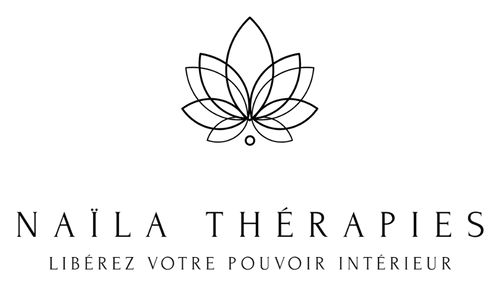Hypnose thérapeutique

Qu’est-ce que l’hypnose ?
L’hypnose est un état de conscience modifié dans lequel la partie consciente de notre esprit se détend, permettant ainsi l’accès à la partie inconsciente de notre esprit, responsable des problématiques ou blocages vécus.
Une fois cet état atteint par le biais d’une détente profonde, il est alors possible de donner à l’inconscient des suggestions de changement ciblées qui auront un impact direct sur les comportements inconscients, les réactifs émotionnels, les peurs et les croyances internes limitantes.
Quelle est la différence entre hypnose et hypnose thérapeutique ?
Dans les deux cas, l’outil principal utilisé par le thérapeute est l’hypnose. Cependant, en hypnose thérapeutique, le but est de revenir à la source de la problématique actuelle afin de modifier le présent du patient. De plus, le thérapeute peut également s’appuyer sur d’autres outils en cas de besoin ou si cela semble pertinent.

À qui s’adresse l’hypnose thérapeutique ?
L’hypnose thérapeutique s’adresse aussi bien aux adultes qu’aux adolescents et enfants de plus de 6 ans (voir la page dédiée).
Quelles sont ses applications ?
Les applications de l’hypnose thérapeutique sont en réalité infinies et permettent entre autres de travailler sur les aspects suivants :
- Stress, troubles anxieux, peurs, phobies et TOC
- Difficultés émotionnelles, états dépressifs et burn-out
- Séparation, divorce et deuil
- Troubles du sommeil
- Douleurs et maladies
- Traumatismes
- Estime de soi
- Confiance en soi
- Harcèlement et difficultés scolaires
- Troubles de l’attachement
- Dépendances légères
- Perte de poids, gestion de l’alimentation et troubles du comportement alimentaire
- Arrêt tabac
- Ménopause
- Sexualité
- Aide à la procréation, suivi de grossesse, préparation à l’accouchement et accompagnement post-accouchement (allaitement, fatigue, lien au bébé, cicatrisation, reprise sexualité)
- Développement ou amélioration des capacités sportives ou académiques
- Énurésie
L’hypnose thérapeutique peut aussi tout simplement être un outil de relaxation, que ce soit par le biais de séances ou par le biais d’un apprentissage en auto-hypnose prodigué par le thérapeute.

Combien de séances sont nécessaires pour résoudre une problématique ?
Le nombre de séances est dépendant de la profondeur de la problématique sur laquelle le patient souhaite travailler, de l’objectif fixé en début de thérapie mais aussi de la régularité des séances et de l’engagement du patient.
De plus, il peut y avoir des éventuelles résistances inconscientes qui peuvent être présentes dès le début du suivi ou alors émerger en cours de thérapie.
Même si des résultats positifs se font la plupart du temps sentir dès les premières séances, il faut garder à l’esprit qu’il s’agit d’une thérapie destinée à travailler sur la source des problématiques et non pas sur les symptômes/réactifs eux-mêmes.
Comment se déroule une séance d’hypnose thérapeutique ?
Il faut tout d’abord faire la distinction entre la première séance du suivi thérapeutique et les séances suivantes.
Lors du premier rendez-vous, nous prenons le temps d’explorer avec le patient ce qui l’amène, d’échanger sur ce qu’il est en train de vivre actuellement, quel est son parcours de vie et surtout dans quelle direction il veut aller et comment il veut se sentir à l’avenir. Cette séance permet également de créer le lien de confiance entre le patient et le thérapeute, confiance primordiale pour le succès du suivi thérapeutique.
Lors des rendez-vous suivants, cet échange se poursuit en lien avec l’objectif fixé lors du premier entretien, tout en restant à l’écoute du besoin du patient qui évolue au fur et à mesure de la thérapie.
Cet échange est ensuite suivi de la séance d’hypnose à proprement parlé pendant laquelle le thérapeute va guider le patient dans un état de détente profond permettant à l’état d’hypnose de s’installer et au thérapeute de proposer les suggestions de changement à la part inconsciente du patient.
À quelle fréquence ont lieu les séances ?
Entre le premier entretien et la première séance d’hypnose, il y faut compter un intervalle d’une à deux semaines. Ensuite les séances d’hypnose ont lieu toutes les 3 à 4 semaines, cela afin de laisser le temps aux suggestions d’être intégrées par la part inconsciente de l’esprit.
Individual session:
Adult – CHF 130
Child < 12 years – CHF 100
Child > 12 years – CHF 130
Package:
Adult (8 sessions) – CHF 880
Child < 12 years (6 sessions) – CHF 540
Child > 12 years (6 sessions) – CHF 660
Are the sessions reimbursed by supplementary insurance?
Each supplementary insurance provider is free to decide whether or not to cover hypnosis sessions, as well as the conditions for coverage. Some only reimburse individual sessions but not packages, others only accept sessions carried out by an ASCA-approved therapist, while others do not consider coverage at all. It is therefore recommended to contact your supplementary insurance.
